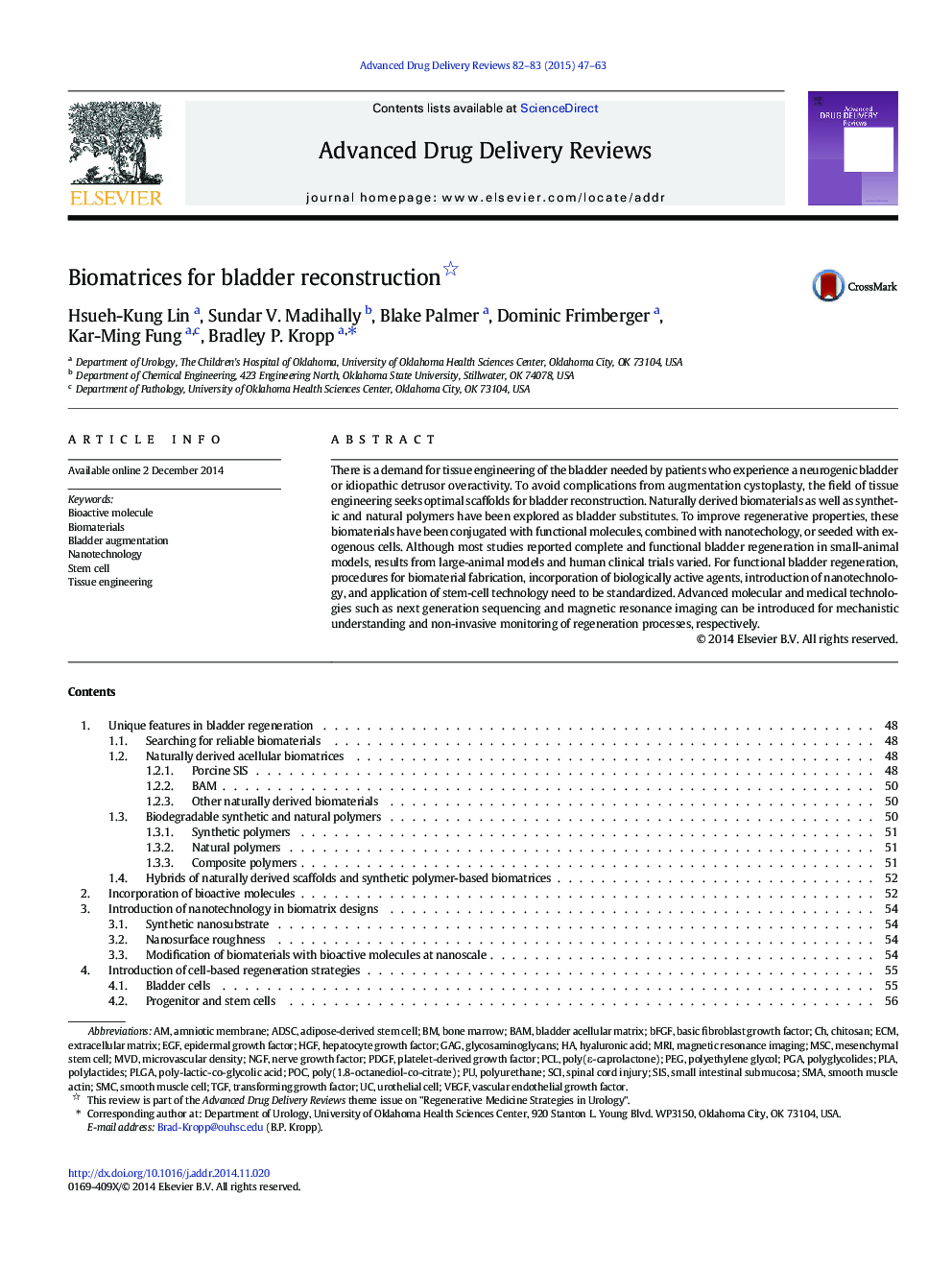| Article ID | Journal | Published Year | Pages | File Type |
|---|---|---|---|---|
| 2070771 | Advanced Drug Delivery Reviews | 2015 | 17 Pages |
There is a demand for tissue engineering of the bladder needed by patients who experience a neurogenic bladder or idiopathic detrusor overactivity. To avoid complications from augmentation cystoplasty, the field of tissue engineering seeks optimal scaffolds for bladder reconstruction. Naturally derived biomaterials as well as synthetic and natural polymers have been explored as bladder substitutes. To improve regenerative properties, these biomaterials have been conjugated with functional molecules, combined with nanotechology, or seeded with exogenous cells. Although most studies reported complete and functional bladder regeneration in small-animal models, results from large-animal models and human clinical trials varied. For functional bladder regeneration, procedures for biomaterial fabrication, incorporation of biologically active agents, introduction of nanotechnology, and application of stem-cell technology need to be standardized. Advanced molecular and medical technologies such as next generation sequencing and magnetic resonance imaging can be introduced for mechanistic understanding and non-invasive monitoring of regeneration processes, respectively.
Graphical abstractFigure optionsDownload full-size imageDownload high-quality image (132 K)Download as PowerPoint slide
